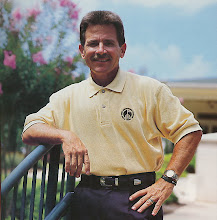I have included a number of photos below that depict areas where NCC members and their guests can significantly assist in contributing to tremendous golfing conditions at NCC. These are actually simple tasks that are common golf course etiquette and that every golfer should be practicing.
We spend over $50,000 a year in repairing ball marks, fairway and tee divots and worn areas along the cart paths from poor cart operation. Please do your part to help care for our fantastic property.
The photo below shows the WRONG way to park a golf cart along the cart path. There is no reason to pull over and off of the path. Your playing partners can and should park behind you. We spend over $10,000 a year correcting these bare "eyesores."
The photo below shows the correct way to park a cart around a tee or green. Keep all 4 tires on the path.
Unrepaired ball marks are currently the only blemishes on our otherwise wonderful putting surfaces.
An unrepaired ball mark will take 3 to 4 weeks to heal. It is not only unsightly but can affect other golfers putting ability.
The golfer who hit the fairway shot below made no attempt to repair the divot. This neglect should not be part of the NCC golfing culture.
It is extremely dangerous to have more than 2 riders on a cart.
Please observe the yellow lines and the stop areas at the two gates South of Clavey Road.
Please place your trash in the trash receptacles rather than on the ground.











